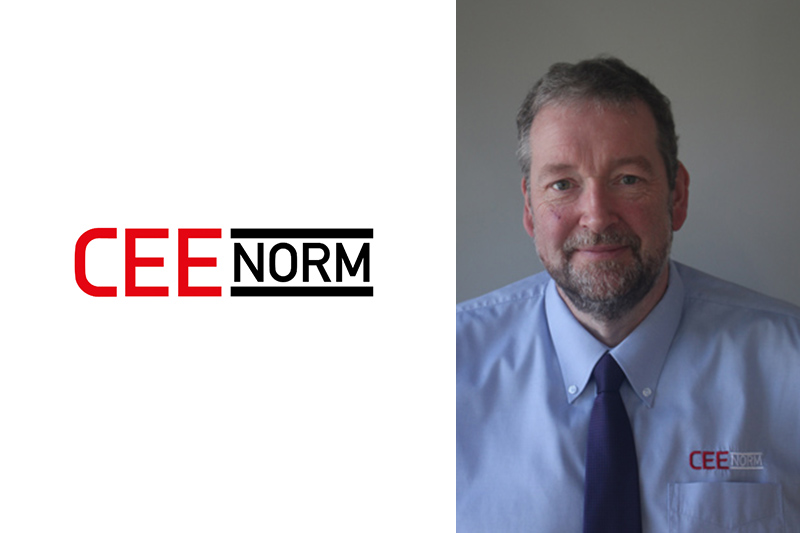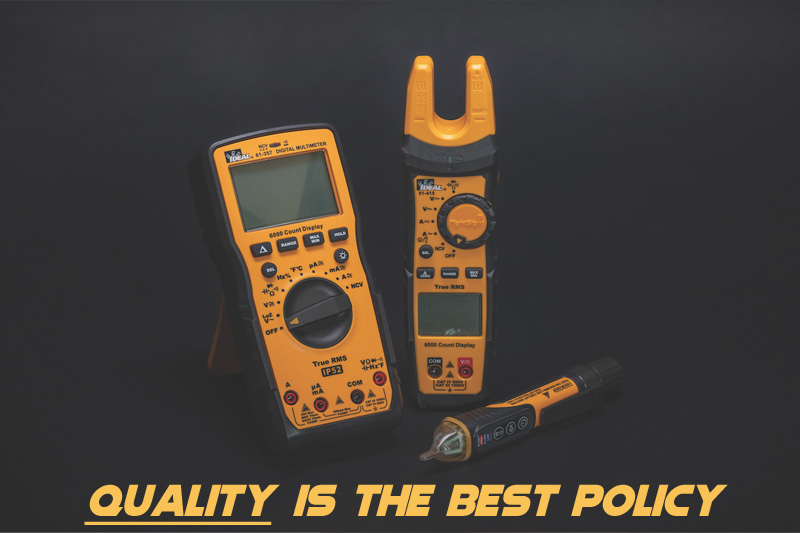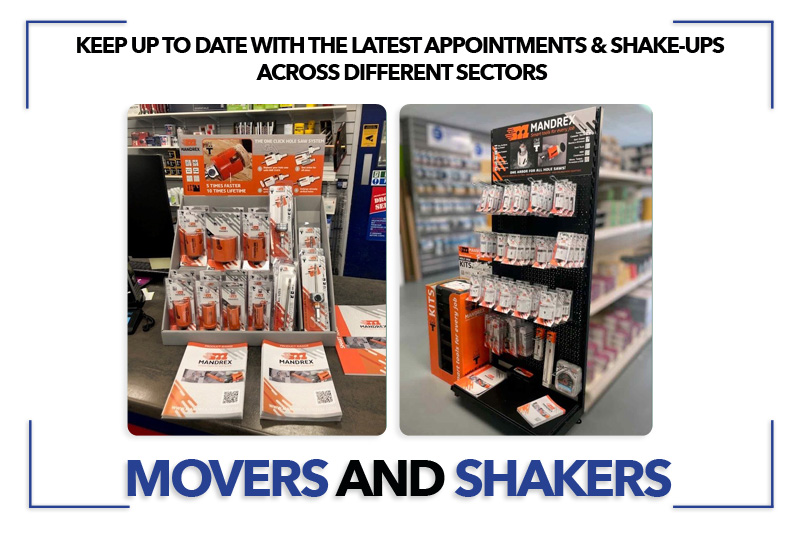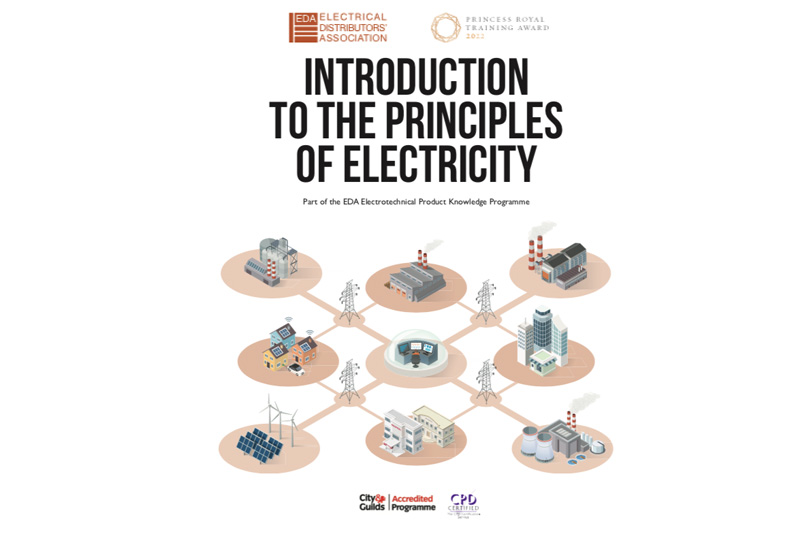Andrew Whyatt, Electrical Engineering Manager within the custom build department at CEENorm U.K, looks at the characteristics that need defining when asked to design a custom built socket distribution system.
When a standard product is not available, it can be difficult trying to find a distribution unit that is the right fit for your customer’s needs. Much of the time it is a challenge to understand all the project requirements, however, when enquiring about a custom built or made to order unit the more detail you can offer at the start of the project, the greater the opportunity to have the correct solution designed first time, saving you and your customer time and money.
Often, especially in the early stages of a project, not all details are known but when specifying a custom distribution product, gaining an understanding of the below areas will help to confidently design the correct solution for your customer.
Project overview / application: Understanding the market sector, overall project outcomes, and environmental conditions helps to select suitable product ranges, and potential alternative solutions that may not have been considered.
Style of Enclosure: Wall/surface mount, free standing, portable. How is the distribution unit to be positioned and supported?
Preferred material: Steel, Stainless Steel, GRP, Polyester, Polyethylene, Thermoplastic or hard rubber enclosures are all options depending on the application. Expanding on this, various grades of steel are available, common options include Mild, Zintec, 304 / 304L, 316 / 316L. All are available as required in a powder coat finish, most commonly RAL7035 (Light Grey). Other colours are available.
Ranges of differing thermoplastic enclosures are selected depending on application and budget. Common materials are, PBT, a polyester material used in our Variabox modular system, often selected for industrial and harsh environments. ABS is a cost-effective polymer and used in several enclosure ranges. Other materials such as PS, (polystyrene), and PC, (polycarbonate), are used for smaller enclosures and device viewing windows.
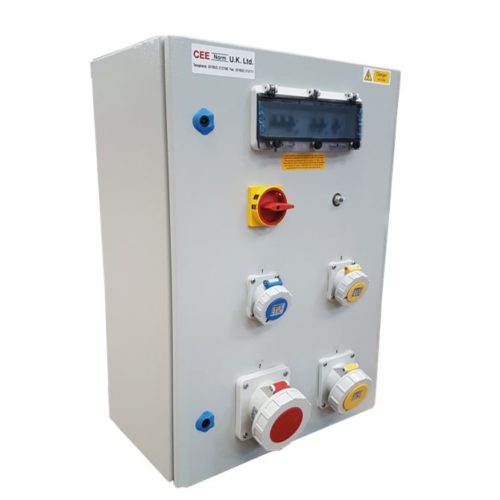
Portable equipment, often used in the events industry, or temporary power applications can use injection moulded enclosures such as our Evobox range, made from LLDPE, (linear low density polyethylene). Alternatively, custom fabricated enclosures using hard sheets of HDPE could be an option.
Preferred IP Rating: Linked to the environmental conditions, what is the minimum acceptable IP rating? Socket options are usually IP44 or IP67, enclosures and other options may have an influence of the overall IP rating of the assembly. Standard 13A BS1363 UK domestic twin switched socket outlets, for example, are rated at IP2x.
Having identified a preferred enclosure style, the next step is to consider details of what is required.
Incoming supply: Hard wired, Single Pole Connectors, Appliance Inlet, Plug & Cable length.
How would your customer like to connect your supply to the supplied distribution equipment?
For fixed installations, hard wiring is preferable, useful details to think about are;
Cable entry, top, bottom, left, or right.
Type and size of cable: To help determine the adequate termination sizes and spreading distances.
How is the supply electrically protected? Knowing if there are upstream fuses, MCBs, MCCBs etc. helps to maintain discrimination between the supply devices, and locally provided earth leakage and/or overcurrent protective devices.
For portable or temporary use equipment, a means of convenient disconnection can be useful. Portable equipment is often supplied with an appliance inlet, the client using an extension lead to connect between the supply and the distribution unit.
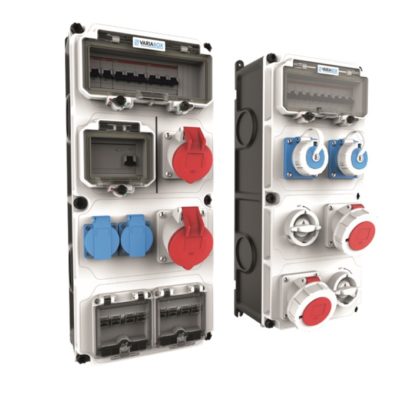
Alternatively, you can fit a plug and cable, our standard offer would be H07RN-F “Rubber” cable. Don’t forget to mention how long you want the cable to be.
Socket Count: How many are required, Current rating (A), Voltage (V), Configuration 3P+N+E (No. of Pins). We simply need to know the sockets that are required, and / or other circuits that may be used for future requirements or external equipment such as a lighting circuit.
To aid clarity, consider combining the socket list with the required electrical protection, for example; 2x 32A 400V 5 Pin IP44 sockets, each protected by 32A 3 Pole Type C MCBs.
Electrical Protection: Where known and if specified advise, RCD sensitivity, types, MCB tripping curve types, Fault Ratings, and preferred manufacturers.
Clarification of required Residual Current Device (RCD) types can help the design to stay within expected budgets.
RCD Devices can include:
RCCBs – Earth leakage Protection Only. Common types are AC, A, S, and B.
RCBOs – Earth leakage with integral overcurrent. (Combined RCCB and MCB).
Variable sensitivity / time delayed Earth Leakage Relays controlling shunt trips.
Overcurrent devices can include:
MCCBs – Moulded Case Circuit Breakers. Various tripping characteristics available.
MCBs – Miniature Circuit Breakers. Common types are B, C, and D.
The experienced and creative engineering team at CEENorm work side by side with companies large and small, working from their initial project requirements through product specification to bespoke manufacture. All products are built and tested, by CEENorm’s inhouse production facility based in Telford. All in accordance with the current regulations and applicable standards, including, but not limited to BS EN 61439, BS 7909, and BS 7671.
FOR FURTHER INFORMATION
For more information, visit: https://www.ceenorm.co.uk/ or email: custombuild@ceenorm.co.uk

